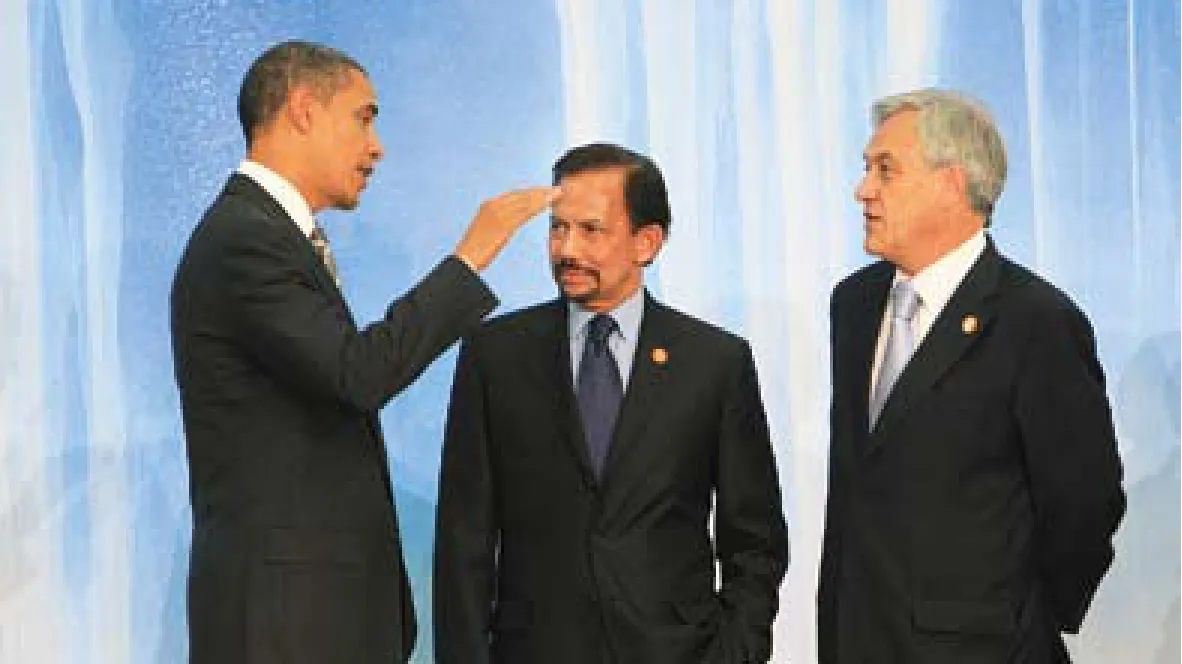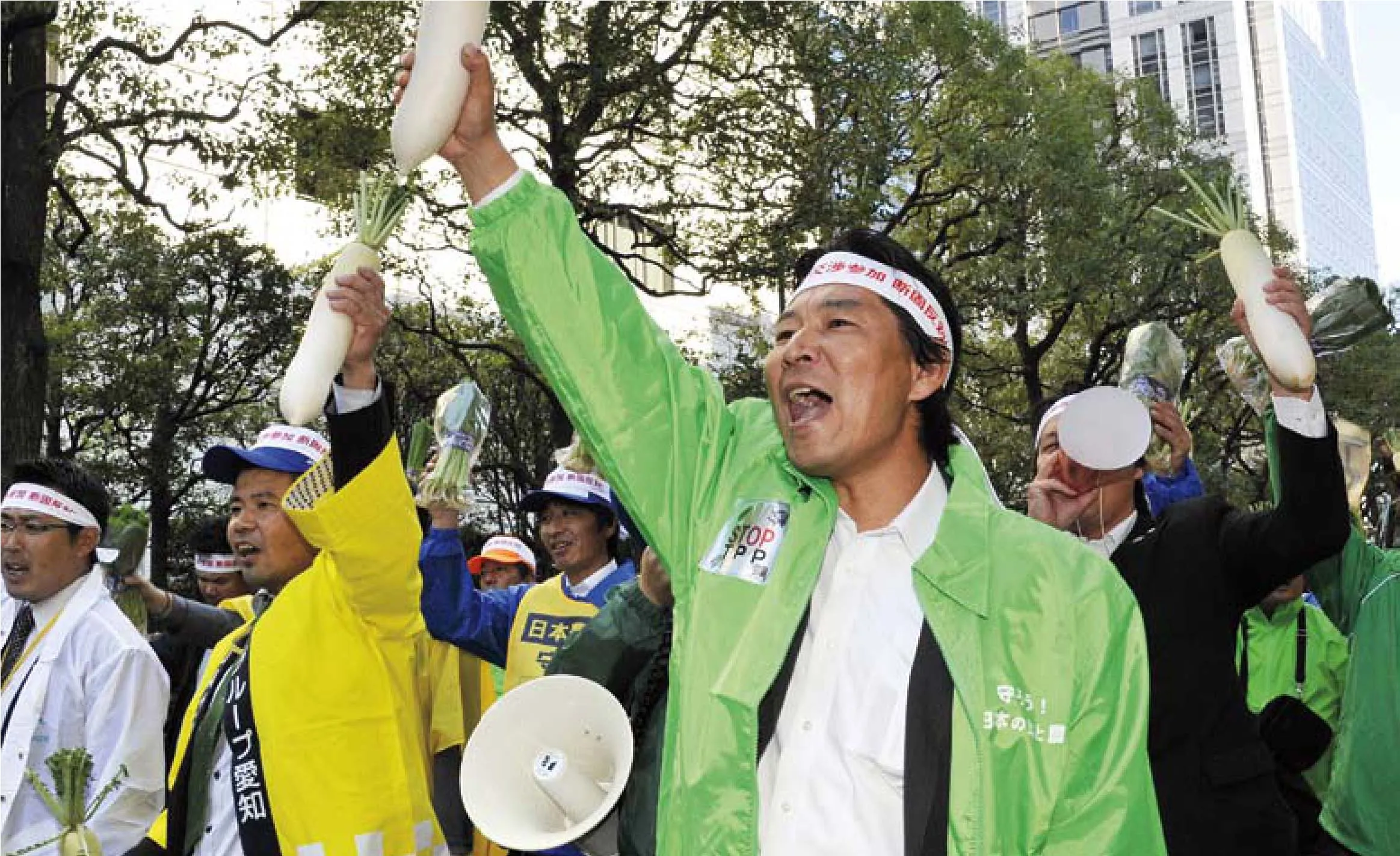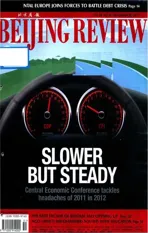The Price Of Free Trade
2011-10-14BySHENMINGHUI
By SHEN MINGHUI
The Price Of Free Trade
By SHEN MINGHUI
APEC faces many obstacles in establishing an Asia-Pacific free trade area
Twenty-one years after its founding, the Asia-Pacific Economic Cooperation (APEC) is facing major challenges.As a leading regional trade and investment forum with 21 member economies, its future development direction will be watched closely.
At the 18th APEC Economic Leaders’Meeting, held on November 13-14 in Yokohama, Japan, leaders agreed to promote the establishment of a Free Trade Area of the Asia-Paci fi c (FTAAP) with practical actions, as part of the regional economic integration efforts.
Benefits
The FTAAP is not a new topic. Actually,after being proposed in 2004, it has been brought to the APEC discussion desk on many occasions. But little progress has been made, due to differences among member economies. This often-shelved proposal was put on the agenda again in 2009, when the United States announced that it would pursue the Trans-Paci fi c Partnership (TPP),a proposed free trade area that now includes Brunei, Singapore, Chile and New Zealand.
The FTAAP could mean many bene fi ts.It could help promote the currently stagnant WTO negotiations and could help overcome the harmful overlapping of regional trade agreements that currently exists.
In addition, the FTAAP can serve as an alternative to the Doha Round of WTO negotiations in case of its failure. It can also prevent the United States from being excluded from East Asian cooperation. What’s more, it can help solve the trade imbalance between China and the United States, and increase the possibility of China being accepted into the U.S.free trade area network. The FTAAP could also bene fi t regional welfare to a huge degree.

However, the FTAAP also faces difficulties. First of all, large differences exist in the economic development levels of APEC member economies. For instance, the 2008 per-capita GDP of Australia, the highest in APEC, was 45.6 times that of Viet Nam, the lowest in APEC.
In addition, the adoption of the FTAAP may signal a move away from the organization’s original principles—featuring “open regionalism” and “concerted unilateral action”—which have persisted for two decades. APEC’s non-binding way, which places emphasis on acting on one’s own accord and reaching consensus through consultation, will be abandoned.
The implementation of the FTAAP could also lead to a split between developing members and developed members. Developed members are so anxious to promote the FTAAP that they tend to ignore their commitments to the Bogor Goals. This has aroused the concerns of developing members. The Bogor Goals, which were proposed at the APEC Summit in Bogor, Indonesia, in 1994, call for the realization of free and open trade and investment for developed member economies by 2010, and for developing members by 2020.
Obstacles
What’s more, there is no driving force for the establishment of the FTAAP, as East Asian economies lack a so-called Asia-Paci fi c identity. Also, it is dif fi cult for any free trade area including China to pass muster with the U.S.Congress. And the FTAAP cannot guarantee the United States will achieve its key goal in WTO negotiations: opening the agricultural product market. This is extremely difficult when it comes to Japan, as Japanese farmers are strongly against this. Dif fi culties also exist for Japan in opening its service sector.
Although the United States is currently moving ahead with the TPP, it only hopes to use it as an alternative to APEC reforms. If it cannot make progress in APEC’s trade and investment liberalization in the run-up to the 2011 APEC Summit in Hawaii, it may continue to absorb APEC members into the TPP,and, by default, turn the TPP into the FTAAP.
However, the TPP requires a high degree of openness in both services and investments, as well as high standards in labor and environmental protection. Couple this with the fact that it has no uniform way of accepting new members, it remains questionable whether the TPP can help develop a free trade area in the Asia-Paci fi c region.
It should be noted that the developing members of APEC lack confidence in the FTAAP. This results from the relatively slow progress in AEPC economic and technical cooperation over the years, and from the reality that the economic gap between the member economies has but expanded.
To be speci fi c, there are a couple of reasons for their lack of con fi dence. First of all,they lack funds for economic and technical cooperation. This makes it dif fi cult to conduct practical activities. Also, APEC’s resource allocation is inappropriate. The priority areas have not been evenly developed. The increasingly empty economic and technical cooperation projects have made things worse.From 2006 to 2009, APEC carried out 326 projects, of which 277 were on information collection and sharing. This cooperation is empty and lacks practical results.

PLEASANT CHAT: U.S.President Barack Obama chats with Sultan of Brunei Hassanal Bolkiah(center) and Chilean President Sebastian Pinera during the 18th APEC Economic Leaders’ Meeting in Yokohama,Japan, on November 14
The FTAAP can only be a long-term goal, promoted gradually in different areas, at different levels and through various channels.Just as Japanese scholar Masahiro Kawai said, it may be most feasible to fi rst promote Asia-Pacific economic integration through ASEAN Plus Three (China, Japan and South Korea), then ASEAN Plus Six (China, Japan,South Korea, India, Australia and New Zealand), and fi nally the FTAAP.
APEC ought to play a leading role in setting the terms of the FTAAP, but the FTAAP should not go against WTO principles. The FTAAP should be a stepping stone, rather than a stumbling block, for WTO trade negotiations.
While forging ahead with trade and investment integration, all member economies should adopt more active attitudes toward promoting economic and technical cooperation. For instance, they can establish an APEC skills development and promotion center to help developing members strengthen human resources development.
Since its establishment, APEC’s development has relied on two fronts: one is trade and investment liberalization and facilitation;the other is economic and technical cooperation. Only when a balanced development is achieved between the two can the Asia-Paci fi c region achieve sustainable economic growth.

FIERCE PROTESTS:Japanese farmers shout slogans in protest of the government’s attempt to join the Trans-Pacific Partnership, a free trade agreement that will call for the opening of the country’s agricultural product market, in Tokyo on November 10
After so many years of effort, from 1989 to 2008, the average applied tariff rate among APEC member economies dropped greatly,from 16.9 percent to 6.6 percent. The total trade in goods and services increased from$30 trillion in 1989 to $140 trillion in 2009.And compared to 1994, the foreign direct investment into the APEC region increased more than four times to $791 billion in 2008,representing an average annual growth rate of 13 percent.
In terms of trade facilitation, the Trade Facilitation Action Plan (TFAP) I, from 2002 to 2006, reduced transaction costs within the APEC region by 5 percent. The ongoing TFAP II further reduced the costs by 1.7 percent from 2007 to 2008. In the meantime, an investment facilitation action plan is also under way.
In order to promote sustainable economic development in member economies, APEC has proposed a growth strategy focused on balanced growth, inclusiveness, sustainability, innovation and secure growth.
Strategy
To implement this growth strategy,APEC will promote the next phase of structural reforms, especially in fi ve priority areas:regulatory reform, competition policy, corporate governance, public sector governance and strengthened economic and legal infrastructure.
In fact, the reason they were chosen as priority areas is because the tariff level within the APEC region has fallen to a surprisingly low level and resistance to further reductions is quite strong.
It is foreseeable that in the future development of APEC, difficulties in reforms in the fi ve areas mentioned above will increase. These reforms involve member economies’ domestic laws, so they will encounter different degrees of resistance within different APEC economies.
In particular, developed members failed to satisfactorily complete the Bogor Goals by 2010. If APEC sets the trade liberalization goal as zero tariffs, it will be impossible for developed members to achieve the Bogor Goals. Only if it sets the goal between 0 and 5 percent can they meet the requirements.Therefore, the fi rst-phase task of the Bogor Goals is just completed to some extent.
Under this premise, as “border measures”have yet to be cleared, it will be inevitably regarded as an evasion of responsibility and a rush to take domestic measures. It is still doubtful whether developing members have enough motivation to participate.
The author is an associate research fellow with the Institute of Asia-Pacific Studies of the Chinese
Academy of Social Sciences
